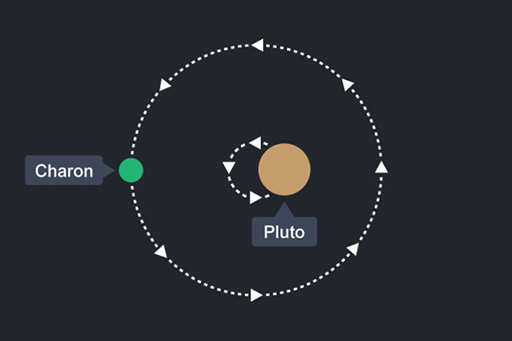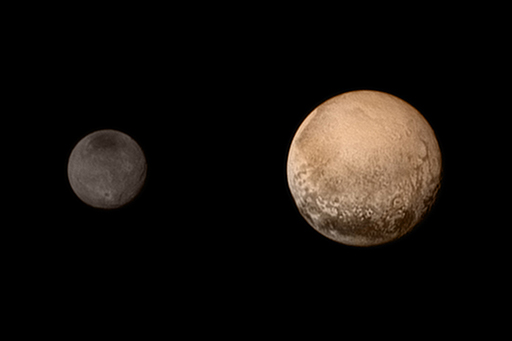3.5 Pluto and Charon
Charon is the largest of Pluto’s five known moons. It is unusual in that it is similar in size to Pluto (compared with other moons and their primaries, which differ substantially in size). Charon has a mass of around one-eighth that of Pluto whereas the Moon has a mass of around one-eightieth that of the Earth. This means that each have a strong gravitational effect on the other. Each tidally locks the other around the centre of mass of the system, which is a little way outside Pluto on a line between the two bodies.
The Pluto–Charon binary system, the numerous moons of asteroids and the moons of Kuiper Belt objects beyond the planets are still a mystery. Such moons are more frequent than the probability of a three-body capture suggests. Perhaps giant impacts, like that suggested for the Moon-forming impact on Earth, took a role in creating these moons?


